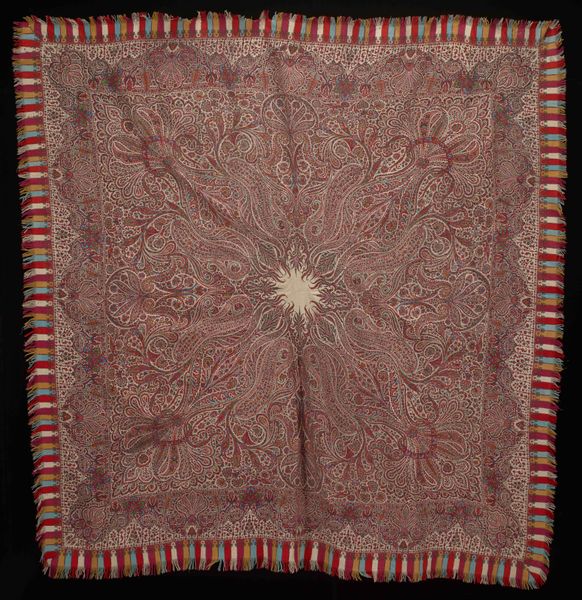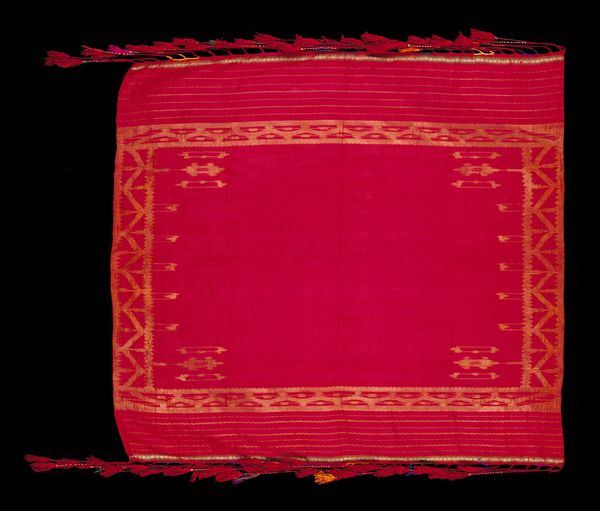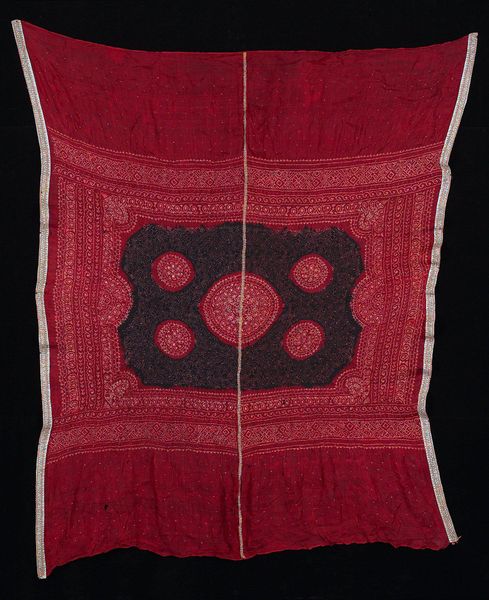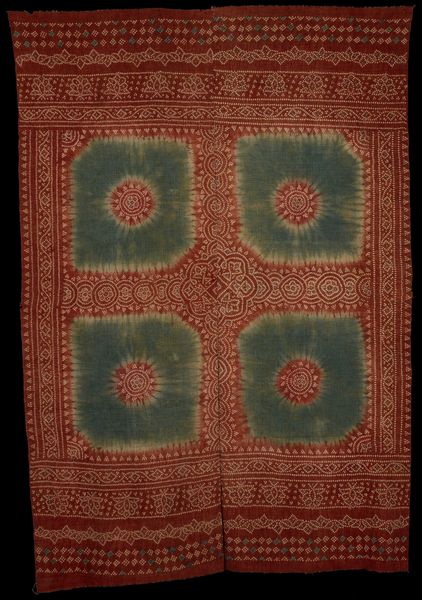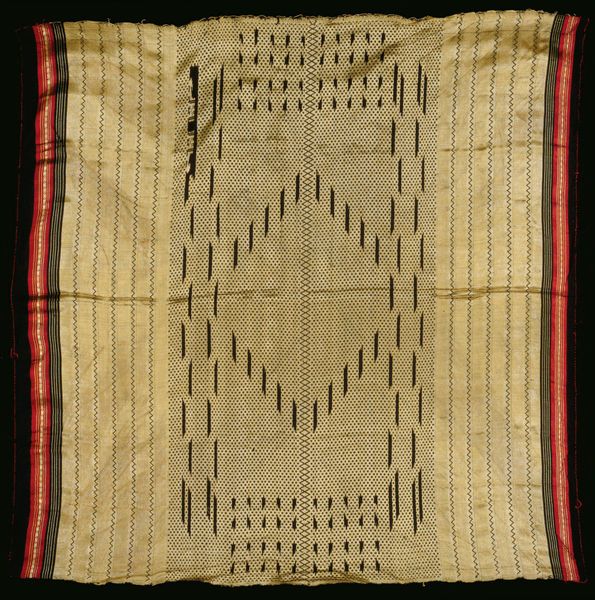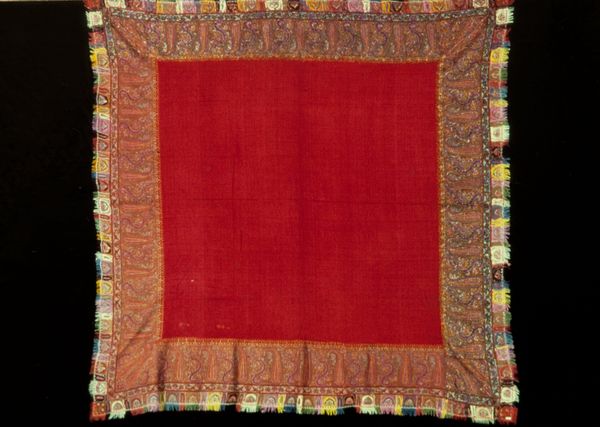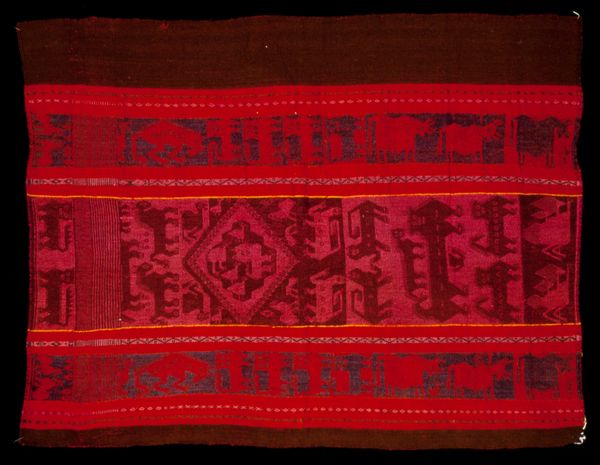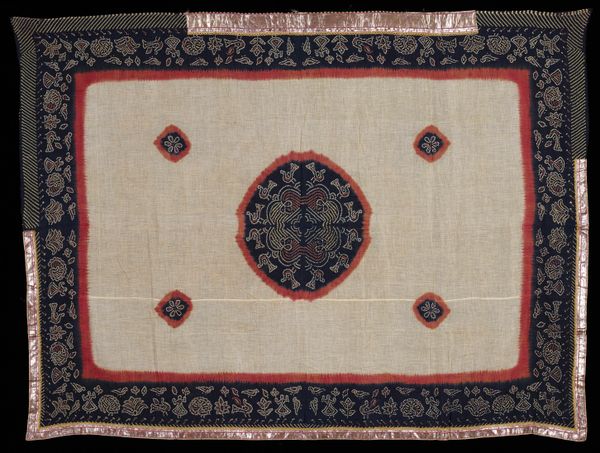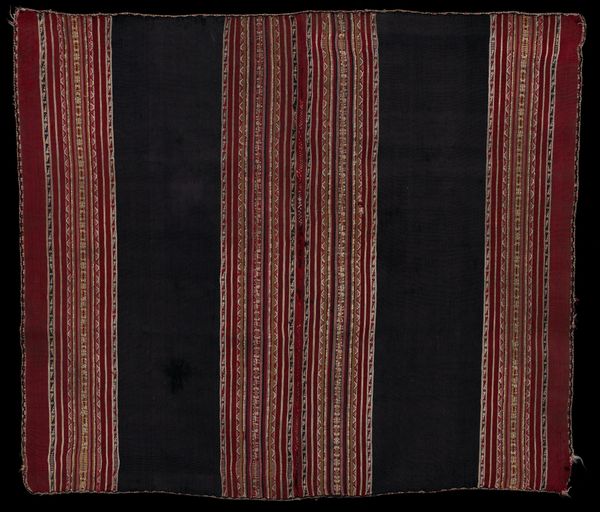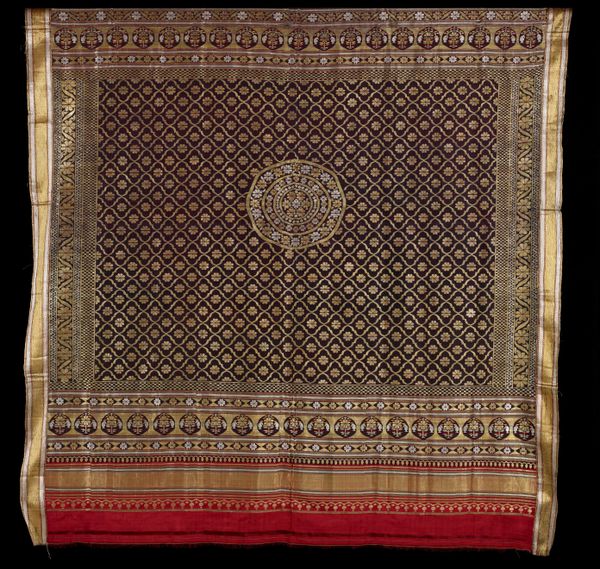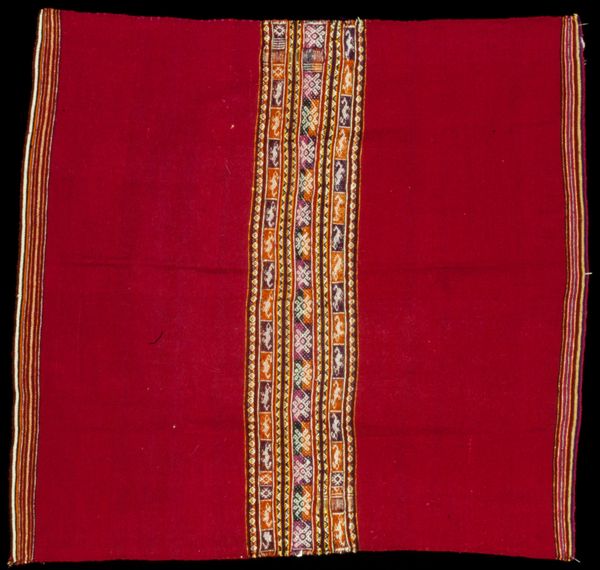
silk, textile
#
silk
#
pattern
#
textile
#
geometric pattern
#
geometric
Dimensions: 82 11/16 x 81 1/16 in. (210 x 205.9 cm)
Copyright: Public Domain
Curator: Here we have a silk textile identified as a Woman's Head Shawl, or Odhani, from an unknown maker and date, currently held at the Minneapolis Institute of Art. Editor: Oh, wow. First thought? It feels… contained. Even though it's fabric, the patterns feel like a map, or a really intricate walled garden seen from above. Do you feel that rigidity, too? Curator: In some ways, yes. The geometric patterns absolutely establish a sense of structure, yet the medium itself, a textile, softens any starkness with its inherent pliability and flow. Looking at its construction, its meaning surely shifted based on how the wearer chose to style it, and also how they moved in their environments while wearing it. We might even ponder whether that affected how they presented to others, how free or constrained they were… Editor: I’m picturing a slow-motion movie scene... Someone twirling dramatically in this thing! No, but seriously, imagining how the cloth falls and moves definitely adds a layer of intrigue. Were these sorts of textiles also indicators of social status or maybe familial identity? Curator: Likely both. These textiles historically serve as social signifiers—they embody a complex interplay of gendered expectations, religious practice, and economic standing. They're never simply decorative; they articulate complex systems of meaning within specific communities. Editor: Right, like each thread whispering stories about power, tradition, and probably some good old-fashioned rebellion! Curator: Precisely. Its recurring geometric shapes are definitely culturally relevant signifiers—likely tied to cosmology, nature, or perhaps lineage depending on its specific origins. The piece seems to beg us to engage not only with the visual, but the social and cultural forces that animated its creation. Editor: What resonates most is imagining hands involved, patiently crafting. It kind of personalizes all those theoretical layers you were just outlining, doesn’t it? Someone imbued those shapes with intent. Now *that* feels worth studying. Curator: Absolutely, remembering that these artifacts carry the silent echoes of lived experiences connects us not only to the past but also fosters critical perspectives on power, gender, and identity in the present. Editor: Well said! I see now why someone would keep this alive in a museum; it gives a face to those grand narratives, and even if anonymously authored, there's something distinctly human within it.
Comments
No comments
Be the first to comment and join the conversation on the ultimate creative platform.
